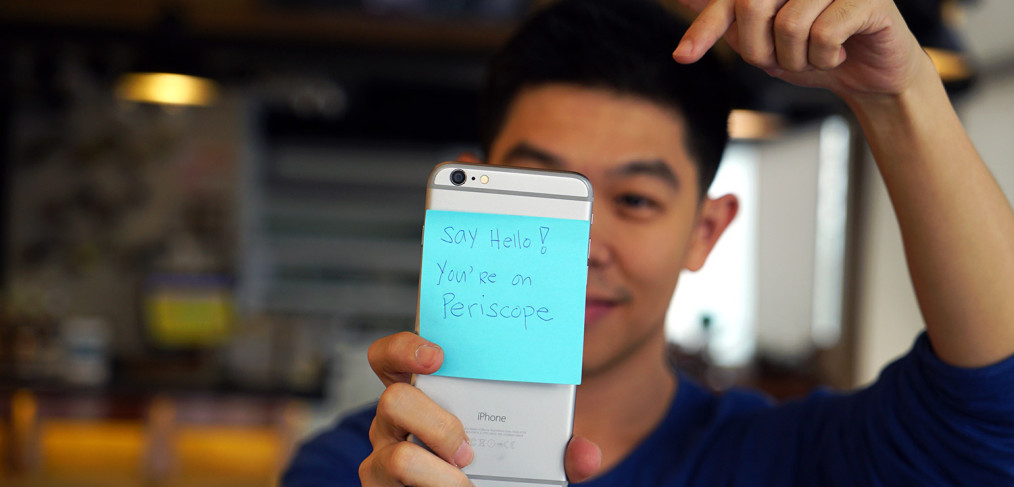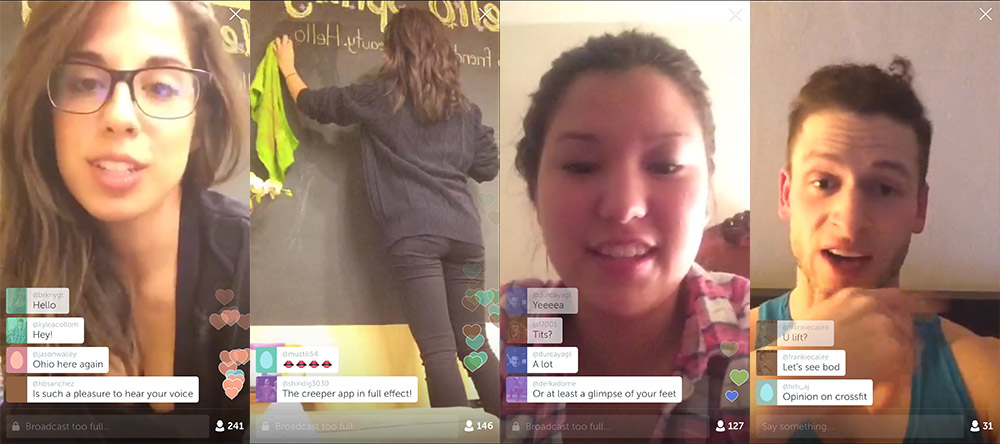
Periscope: The app changing broadcasting
It’s shocking how many creeps are on the Internet.
Given the right conditions, they pop out of nowhere. Twitter’s new live streaming app Periscope, is one such stimulus. Inspired by the idea of “discovering the world through someone else’s eyes,” the app lets users open doors to private lives like never before.
Launch the app, hit the record button, send out a tweet to your followers…and just like that, you’re sending live audio and video across the world. Viewers can posts comments and/or questions that float across the screen for a few seconds and then fade away. And if they like what they see, they can also tap on the screen to send hearts – where the only limit is as many taps a user is willing to make.
While currently, the majority of Periscope livestreams are mundane and trivial, the experience is compelling, and the idea highly addicting. Make a mental imprint of Periscope and what it is today – someday soon, it may be as ubiquitous as apps like Twitter and Instagram that have come before it.
A few days back, I spent a good half hour enthralled by a broadcast named “Chalk Art in Los Angeles,” by artist Amanda Oleander. In front of an iPhone, on the other side of the world, stood an Anne Hathaway look-a-like, hair down, nerdy glasses, skinny jeans, a sweater and some cleavage.
Things got weird however, when after her intro, she turned to face the giant chalk board behind her. As all 150 or so viewers got a glimpse of her behind, the creepy comments sprouted like mushrooms. One viewer aptly put it, “The creeper app (was) in full effect.”
I left the stream and channel surfed through the myriad of other active periscopers.

Apart from the frequent “fridge video” – a rising trend where users go through the contents of their refrigerators, most other the livestreams are of men and women, scantily clad, in bed, having free and open discussions with whomever else wants to tune in.
You shouldn’t judge a person by how he or she looks, or acts, but there’s something about the intimacy of these videos that confuses the brain into thinking that you are watching a live sex show. The “show us your private parts” comments don’t help either.
It’s uncomfortable and unsettling. One Asian-American twenty-something, broadcasting from her bedroom was bullied into showing her feet, she obliged but was then asked for “more”. Thankfully she knew how to handle herself. Someone asked, “Are you a virgin?” to which she responded, “I’m a vir-go.”
Other users take advantage of this “user interest” with clickbait titles like “Big Black Titiez” only to see their views drop from 200 to 2 in under a minute, after not living up to pre-set expectations.
But these are more about growing pains than the failures of a platform. In fact, despite its first round turn offs, I’m confident the app will mature as a platform, and in the process evolve both professional and personal broadcasting.
It must be said that the concept of smartphone apps that can live stream isn’t new. In fact, apps like UStream, JustinTV and LiveStream have been around since 2007. But between usability issues and a maturing mobile Internet infrastructure, none of these services have had mainstream success.
But that’s about to change.
A few weeks before the launch of Periscope came a similar app called Meerkat, which made a lot noise among tech journalists.
Just as Twitter has added a layer of interaction to live TV, apps like Meerkat and Periscope allow users to not only react to live broadcasts, but affect it. Never has live streaming been this social.
Twitter’s Vice President for Product Kevin Weil tells BuzzFeed, “Our perspective is that live video is not just a new product, it’s an entirely new category. I think it opens up entirely new behaviors, with new ways of interacting.”
He’s right. Expect communication to evolve, just like when we moved from sharing with large social crowds to more intimate groups on messaging apps like WhatsApp and SnapChat.
And then there’s the possibly of the “Instagram effect,” the insatiable thirst to constantly document & share moments through a series of photographs.
Imagine when social sharing transcends photos and video and moves on to live moments, Technology Review hilariously predicts a time where we all “broadcast every drama.”
There’s also talk about how Periscope will change the face of journalism.
Sports Associations will want to think about the implications of how multiple live streams from sports fans will compete with live broadcasts, and how that will affect the business of broadcast rights sold for hundreds of millions of dollars.
And how it will affect citizen journalism?
Periscope was tested on launch day when it became the go-to platform for airing live video of an explosion in Manhattan. Not too long ago, networks like CNN would crowdsource photos and video posted by users to social media for use in breaking news coverage. Last March 26, users on Periscope were broadcasting breaking events themselves.
I’ve got turned notifications turned on, so I get a whistle when someone I’m following starts a broadcast. Since its launch, Periscope has hosted live streams of Dr. Sanjay Gupta on the operating table, Jimmy Fallon rehearsing for one of his shows and David Blaine performing some magic tricks.
One other person I follow is chalk-artist Amanda, who apparently, is one of the most loved broadcasters on Periscope. She’s risen to fame in the last week and now has over 36,000 followers and three million hearts (and counting).
Later that day Amanda was back in front of the camera chatting with over 300 fans. This particular chat session was more chill and intimate and I got to learn more about her.
She’s a full time artist who makes most of her income from commissioned work, the chalk art I had seen her complete earlier is a once-a-month gig, and she’s currently illustrating a children’s book.
In between bouts of, “maybe I’m giving too much info” she talked about why she’s gravitated to Periscope, “I’ve been wanting to do this since I was a kid and this app is helping me make my dreams a reality. I love talking to people, I love motivating people. And I want to use this platform to promote art.”
She’s also just cut her hair, her nerdy glasses are for her astigmatism, loves dresses as much as she does skinny jeans, and for anyone interested in her boobs she has this to say, “I’m a lady…you shouldn’t objectify me.”
“Periscope: The app changing broadcasting” was first published in The Philippine Star on April 6, 2015 as part of my regular Gadget Week column. The Philippine Star Technology Section is printed every Monday, and is also available as a digital download from digitaledition.philstar.com.
